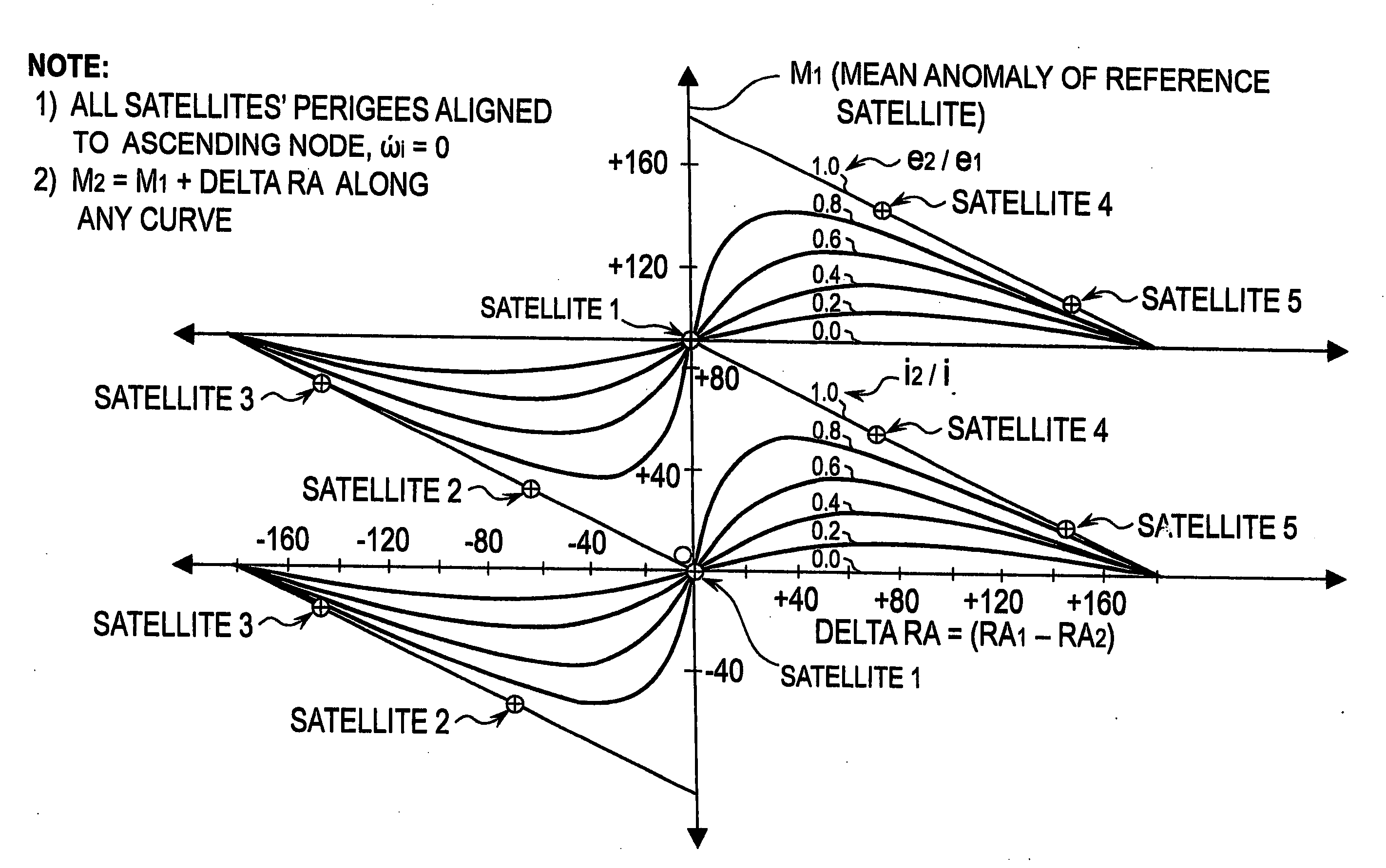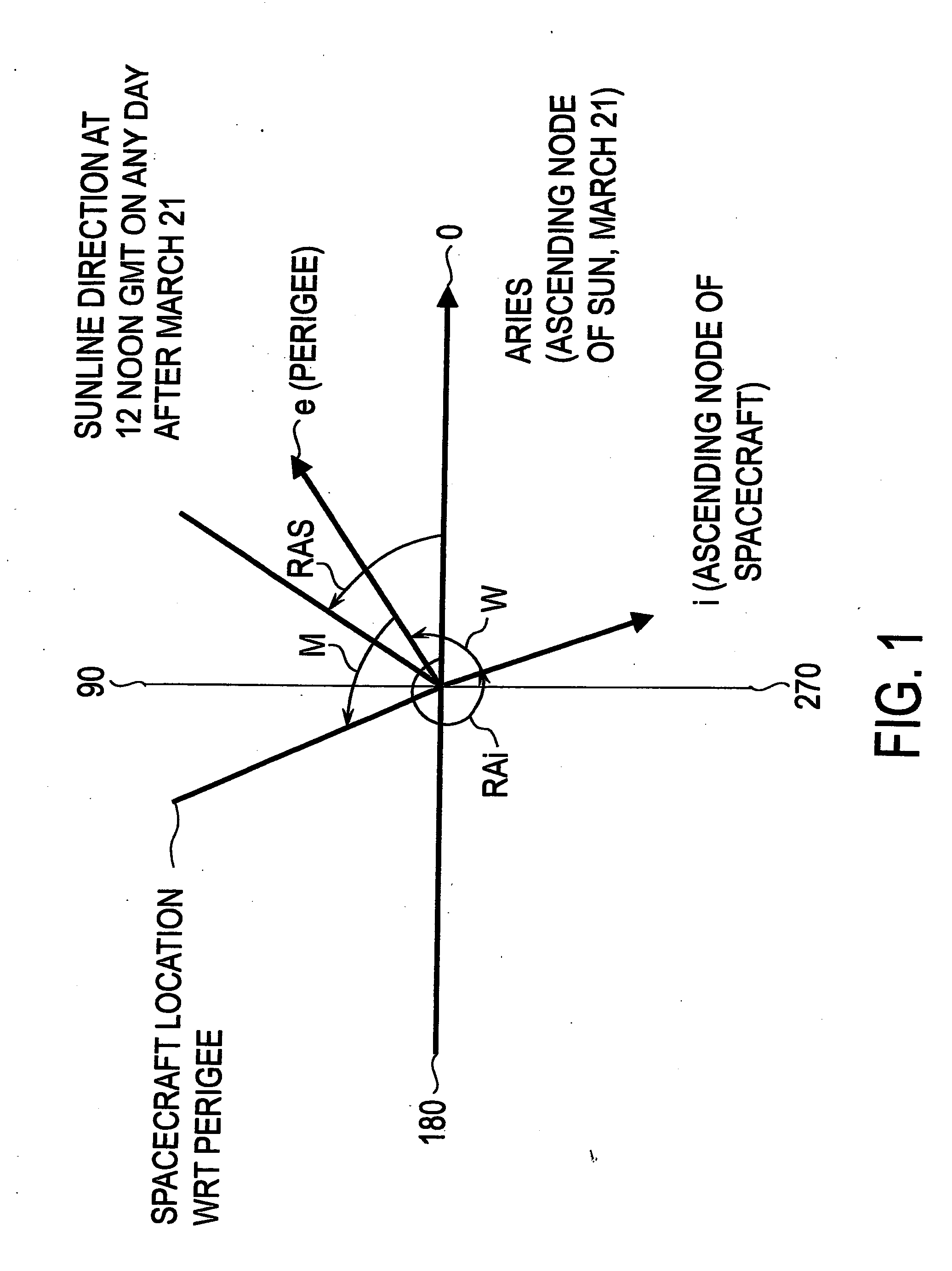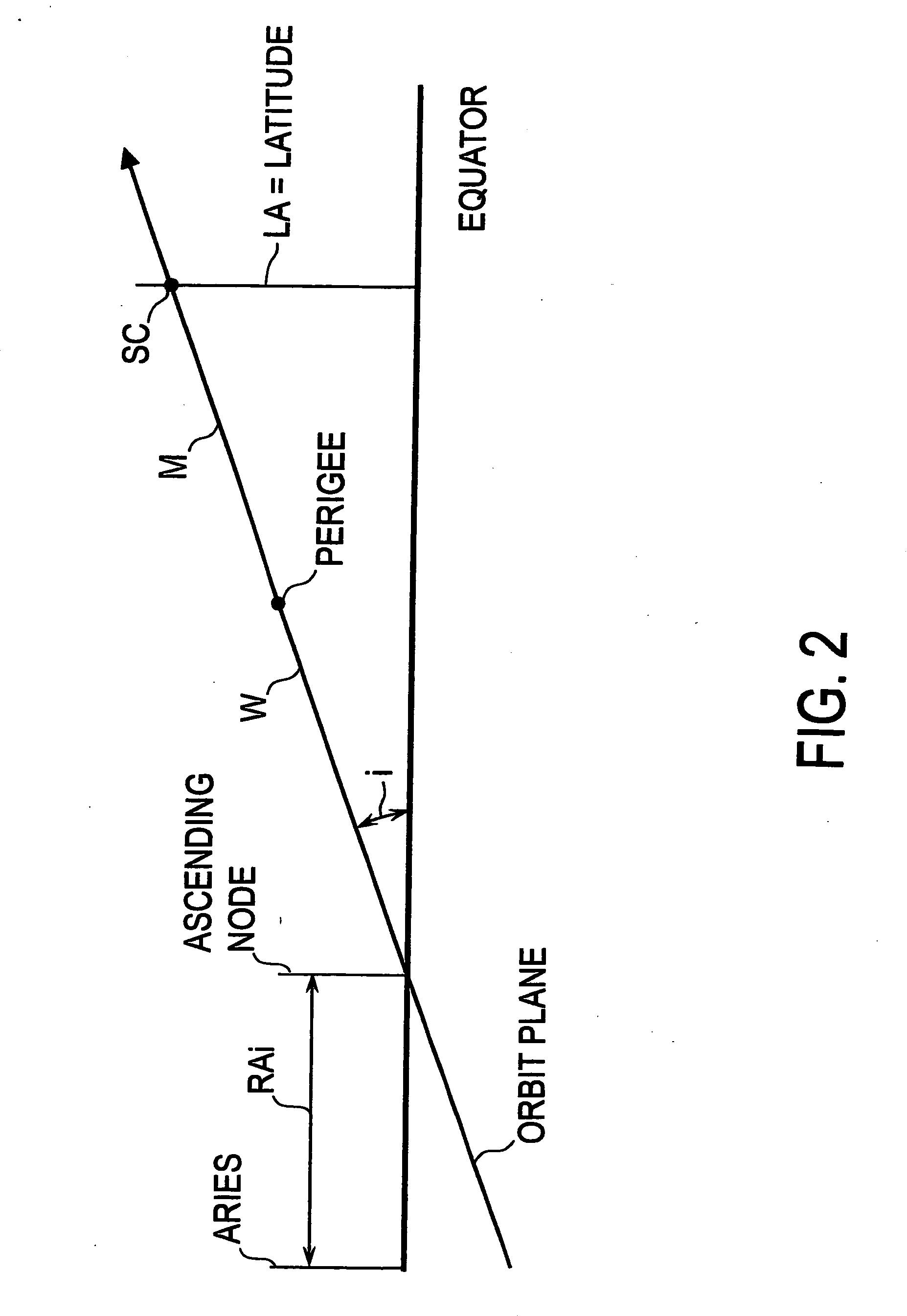Inclined orbit satellite communication system
a satellite communication system and satellite technology, applied in the field of communication systems, can solve the problems of satellite end of life, high cost, complicated prior art tracking system,
- Summary
- Abstract
- Description
- Claims
- Application Information
AI Technical Summary
Benefits of technology
Problems solved by technology
Method used
Image
Examples
case b
[0071]We next examine the loci where the reference satellite has its perigee aligned 90 deg ahead of the ascending node, i.e., w1=90 but all other satellites have their perigees aligned along the ascending node, i.e., delta w=90. These assumptions result in the following four solutions:
Identical Radii:
[0072]
(1) M2=Q+90, M1=M2−(delta RA+90),
(2) M2=Q+270, M1=M2−(delta RA+90)
Identical Latitude:
[0073]
(1) M1=Z−90, M2=M1+(delta RA+90),
(2) M1=Z+90, M2=M1+(delta RA+90)
[0074]FIGS. 5a &5b illustrate each of the four solutions as a family of curves with parameter (e2 / e1) or (i2 / i1). Note first that the “solid family of curves” defining the loci of all solutions where radii are equal have shifted to the left on the X axis by 90 deg, since delta w is equivalent to adding 90 deg to delta RA. Note second that the “dashed family of curves” defining the loci of all solutions where latitude is equal have shifted down on the Y axis by 90 deg, since perigee of the reference satellite has been moved for...
case c
[0075]We finally examine the loci where the reference satellite has its perigee aligned 180 deg ahead of the ascending node, i.e., w1=180 but all other satellites have their perigees aligned along the ascending node, i.e., delta w=180. These assumptions result in the following four solutions:
Identical Radii:
[0076]
(1) M2=Q+90, M1=M2−(delta RA+180),
(2) M2=Q+270, M1=M2−(delta RA+180)
Identical Latitude:
(1) M1=Z−180, M2=M1+(delta RA+180),
(2) M1=Z, M2=M1+(delta RA+180)
[0077]FIGS. 6a &6b illustrate each of the four solutions as a family of curves with parameter (e2 / e1) or (i2 / i1). Note that the “solid family of curves” defining the loci of all solutions where radii are equal have shifted to the left on the X axis by 180 deg (as expected), since once again delta w is equivalent to adding 180 deg to delta RA. Note also that the “dashed family of curves” defining the loci of all solutions where latitude is equal have shifted down on the Y axis by 180 deg from the w1=0 solution, yielding the s...
PUM
 Login to View More
Login to View More Abstract
Description
Claims
Application Information
 Login to View More
Login to View More - R&D
- Intellectual Property
- Life Sciences
- Materials
- Tech Scout
- Unparalleled Data Quality
- Higher Quality Content
- 60% Fewer Hallucinations
Browse by: Latest US Patents, China's latest patents, Technical Efficacy Thesaurus, Application Domain, Technology Topic, Popular Technical Reports.
© 2025 PatSnap. All rights reserved.Legal|Privacy policy|Modern Slavery Act Transparency Statement|Sitemap|About US| Contact US: help@patsnap.com



